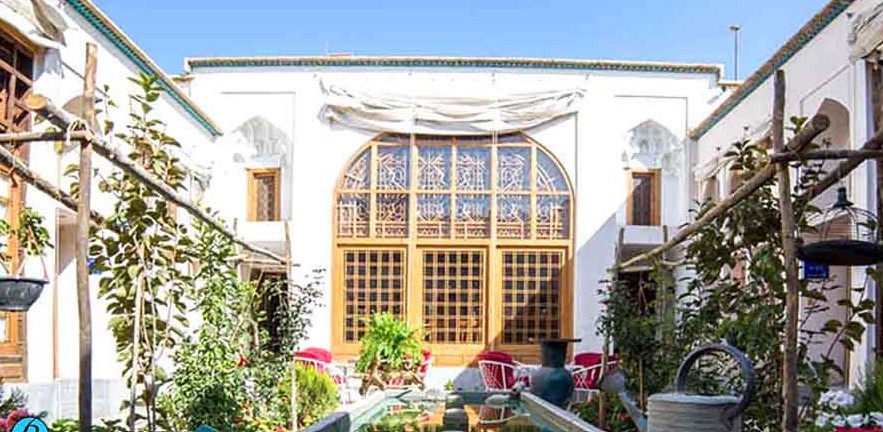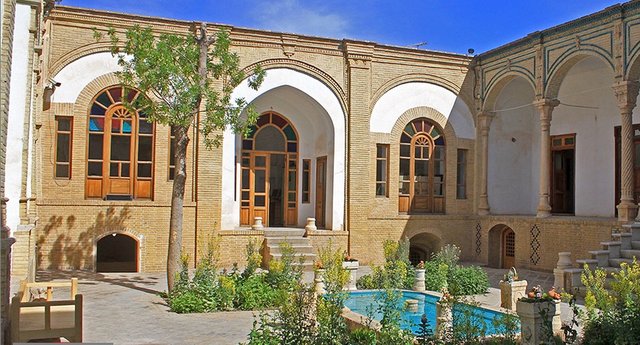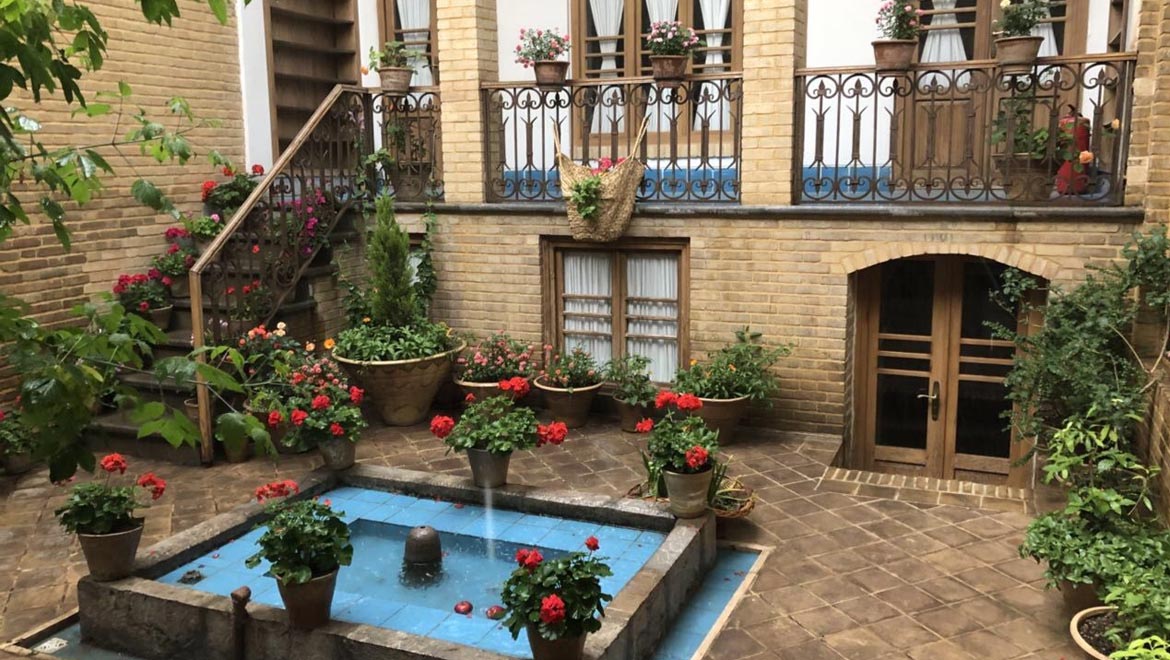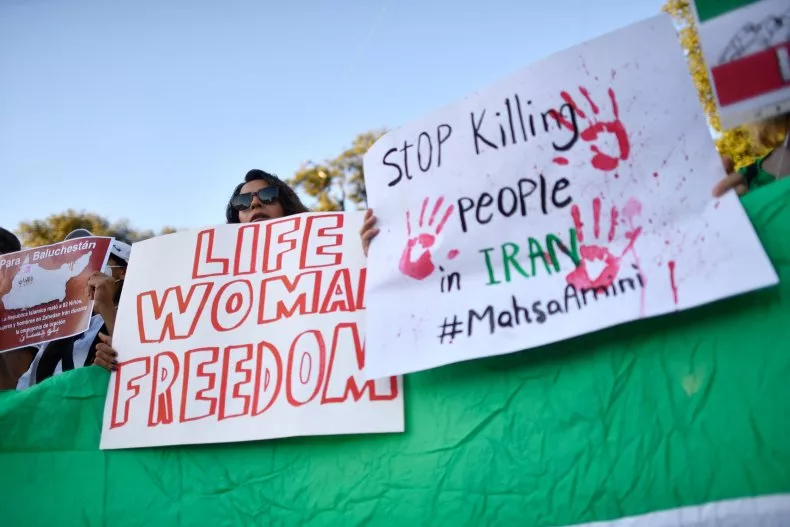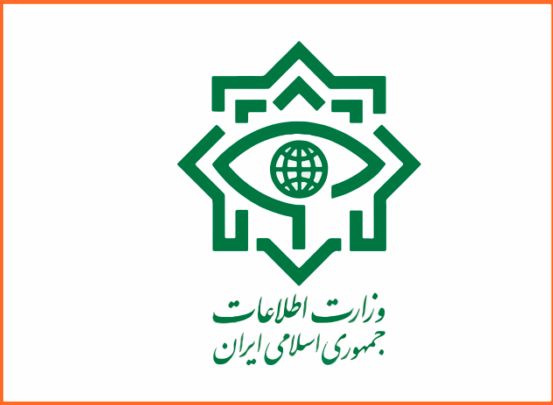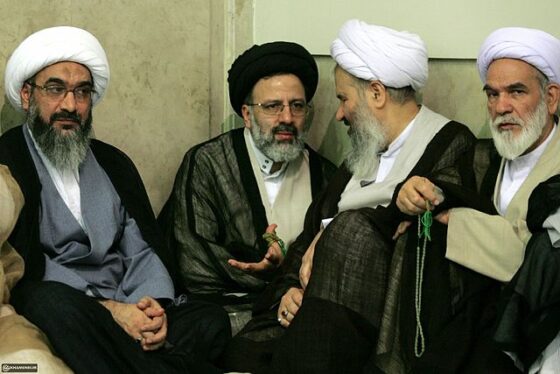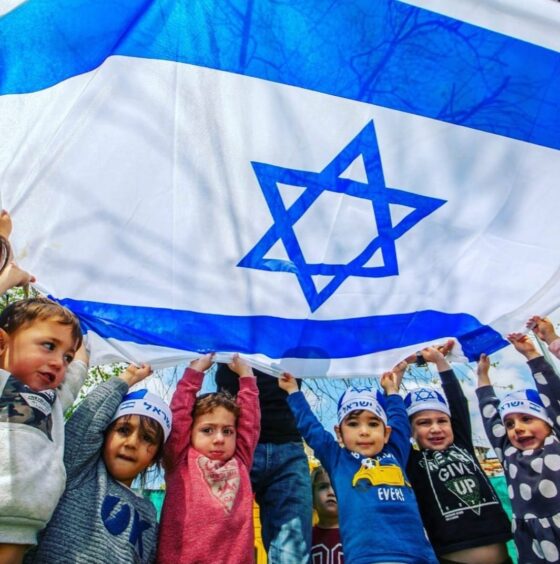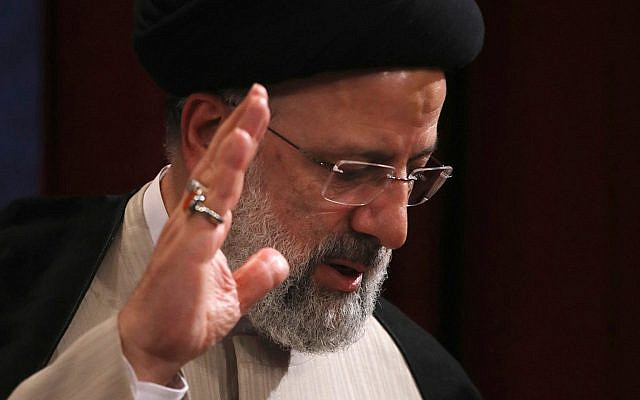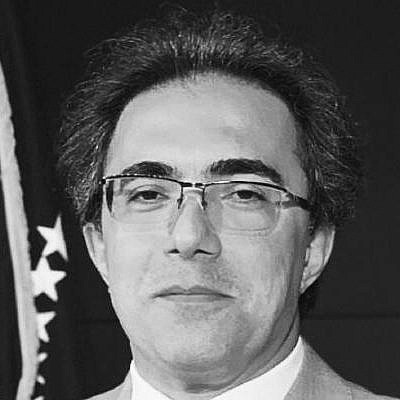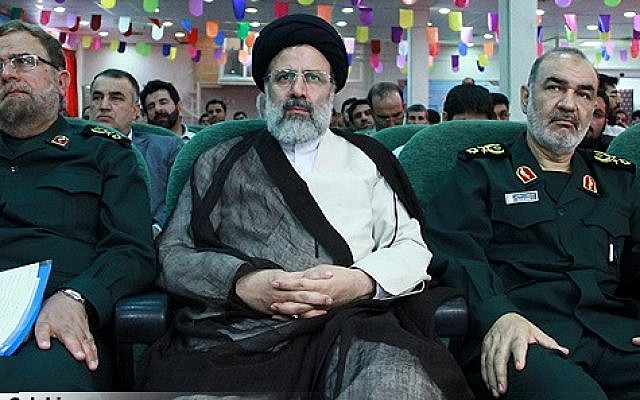Iran Is Nearing Collapse Under the Strain of Covid-19
Published on: 2020-12-23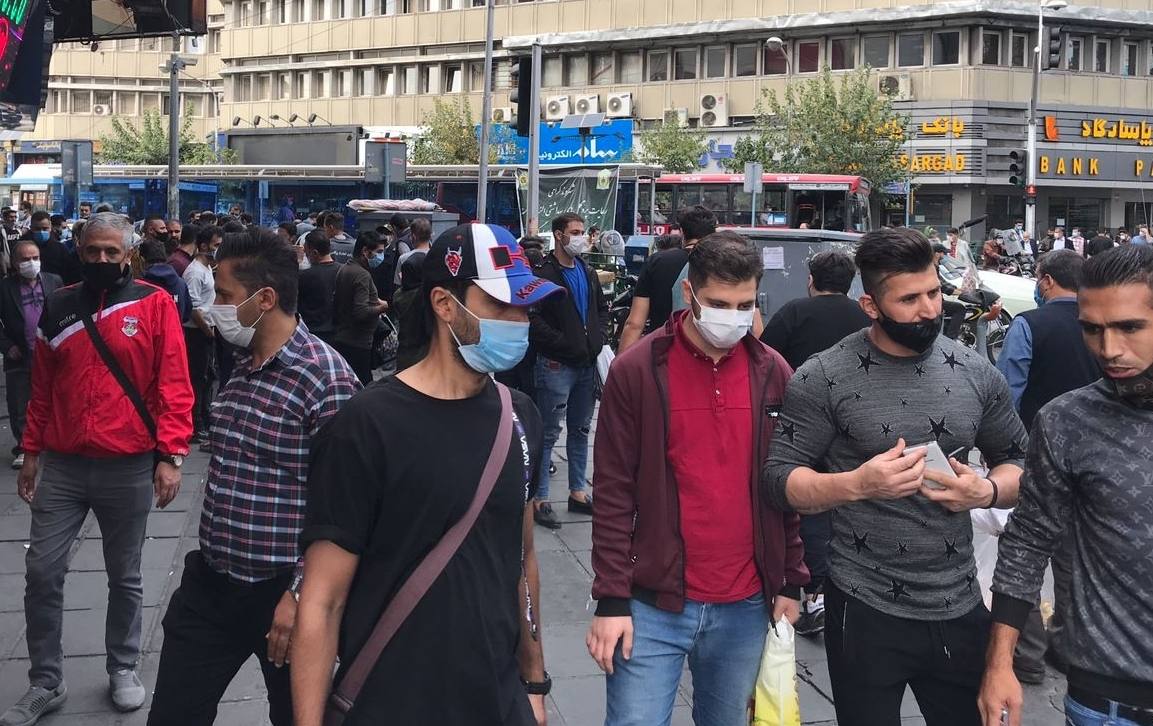
Tens of millions are reeling under an unholy trinity of pandemic, US sanctions, and government misrule.
By Ahmad Jalalpour – 21 December 2020
There are indications that Iran could be among the worst-affected countries in the world by the coronavirus pandemic and its associated problems.
Accurate pandemic numbers are hard to come by because of the opacity of the Islamic regime. However, based on sporadic statements by government officials as well as direct testimony from members of the country’s beleaguered medical community, it is hard to avoid the grim conclusion that Iran may be among the top three or four worst-hit countries in the world, with the other three—India, the United States, and Brazil—possessing much larger populations.
The world is inundated on a daily basis with stories of suffering and tragedy, but Iran’s problems are of a different order of magnitude altogether. Given the endemic problems of governance and the tightening of the sanctions under the new US special representative for Iran, Elliott Abrams—not to mention the devastating toll on the country’s medical community—a consensus is forming among medical professionals that the country is fast approaching a catastrophe.
Iran is primarily an oil-exporting country. Technically, the medical system is exempted from US sanctions, better known as the “maximum pressure campaign.” However, by targeting the country’s financial and energy sectors, the US sanctions have set off an economic depression that could be worse than any in Iran’s modern history.
Even before the onset of the pandemic, the purchasing power of an average family had been nearly halved, the general health of the population had deteriorated markedly, prices of pharmaceuticals had skyrocketed, and a massive shortage of medicine and equipment was straining the system to the breaking point. This, coupled with the abysmal mishandling of the pandemic by the government after the February outbreak, is causing misery and havoc on an unprecedented scale.
What most people outside Iran don’t realize is that Covid-19 is not the only pestilence hitting Iran at present. There is also, as an indirect result of the economic depression, a horrific crime spree, a fast-spreading wave of suicides among young people, a pandemic of business closures, a catastrophic drop in living standards, an epidemic of substance abuse, and a terrifying wave of evictions and relinquished homes (as high as 10 percent in Tehran alone). And all this is exacerbated by a contagion of graft and corruption in high places and the aftermath of several recent earthquakes and floods.
In fact, many experts are of the opinion that, if unchecked, these alarming conditions could make the coming winter the worst the country has experienced since 1916–18, when famine and disease took the lives of over 1 million people.
A NEW WAVE
Right now, Iran is in the throes of its most severe pandemic surge, with many hospitals strained to the point of complete collapse. “There is no way we could continue like this. We are reaching the absolute limits of our technical, physical, and mental capabilities,” said a doctor at Masih Daneshvari hospital in Tehran. The hospital, which specializes in respiratory ailments, has seen its number of Covid-19 patients triple in the space of less than a month. The situation is so dire that makeshift beds have been set up in the open air, with rudimentary coverings standing for tents. “Drive-in ventilation” sections have been installed in the parking lots of a number of hospitals, where patients take turns using ventilation machines while staying seated in their cars.
Those who end up in regular hospital wards count themselves the lucky ones these days. According to a doctor at Shohada Hospital in Tehran’s Yaftabad precinct, dozens of makeshift beds are set up in the hospital’s crowded corridors. The patient volume is so high, in fact, that many new cases are receiving outpatient care services only, with cafeterias and corridors serving as repurposed field hospitals. Co-ventilation has also been reported at some localities.
With the number of fatalities running at astronomical levels, many established protocols for Covid-related burial, such as using metallic materials for coffins or pouring limestone onto individual graves, are not enforced any more. So is the practice of interring those who have died from the virus in separate parts of graveyards, thus placing the lives of thousands of workers and employees at the country’s mortuaries and cemeteries in grave danger.
Additionally, several thousand volunteers who have donated items like homemade protective gear or cover sheets, or else organized food drives for the sick and hospital staffs, have been told to desist for fear of spreading the virus, thus causing further strains on the hospital system.
Because of the large number of Covid patients, all Iranian hospitals that are state-owned, some 80 percent of the total, are now required to have a section exclusively allocated for Covid patients. This makes sense, because of the high volume, but it is also creating an extremely dangerous environment for everyone else—staff, visitors, and non-Covid patients.
“In effect, we are all now frontline workers,” said a nurse at the cancer treatment ward at the Imam Hossein Hospital in Tehran. “There is no way to monitor all the comings and goings when there is such a huge surge in patient volume.” She admitted that there had been several known cases of patients treated at her section who have been infected, but she believed it was unavoidable under the circumstances. “My colleagues and I are doing all that is humanly possible, but what can we do when people don’t follow safety rules, or some patients show negative test results but are actually infected?”
Together, the epidemic and the sanctions are causing devastation in the entire medical system. Elective and even many urgent surgeries for non-Covid patients have been canceled repeatedly because of fear of contagion; several hundred medical professionals and workers have died from the virus, with many more having been infected. Essential medicine has become scarce or nonexistent on account of the sanctions, and, according to newspaper reports, about two dozen private-sector hospitals are now on the verge of closure at a time when their services are sorely needed.
Many of Iran’s neighbors and hundreds of diplomats and former security officials from around the world have called for ending or easing the sanctions during the pandemic because of the threat it poses to millions of people inside and outside Iran. Instead, the Trump administration has announced it is imposing additional sanctions.
There are few issues that enrage a medical professional in Iran these days more than the sanctions. “You would think that the United States would somehow come to assist us in our time of need. But for God’s sake, Trump is adding sanctions during the pandemic?” a pulmonary specialist at Mehr Hospital in Tehran asked rhetorically. He told The Nation that he used to admire American culture and values, making it all the harder for him to understand current US policies. “I studied at the Walter Reed Medical Center in the ’70s. All these years I have considered myself pro-American. But I must admit I am at a complete loss to understand this. What the hell is going on with the United States these days?” (That last sentence was uttered in perfect English.)
SHORTAGES
A look at the situation with prescription drugs illustrates the catastrophic state of health care in Iran, which is in turn directly affecting the way the pandemic is spreading.
Pharmaceuticals have always been heavily subsidized in Iran, even going back to the years before the revolution. Until 2018, before the Trump administration placed punitive sanctions on Iranian oil sales and other transactions, about 15 percent of the domestic supply of medicine (in dollar terms) came from abroad, at drastically reduced rates. The rest was picked up by local producers, whether private or governmental, who purchased much of their raw material and pharmaceutical ingredients (up to 60 percent) from foreign sources, again at generously subsidized rates. The government used billions of dollars in proceeds from oil sales either to purchase medicine or to subsidize the ingredients that go into making it. The market price of drugs was also regulated.
Under that system, the public seemed happy, manufacturers were happy, and the country’s rulers were happy. It was all part of a magical formula that had successfully bought off the public for more than four decades. That arrangement fell apart on November 5, 2018, when Trump announced the imposition of sweeping new sanctions against the Iranian economy.
On paper, there are no sanctions on Iran for medical supplies and pharmaceuticals. But as Human Rights Watch pointed out in an April 6 report, “these exemptions have failed to offset the strong reluctance of US and European companies and banks to risk incurring sanctions and legal action by exporting or financing exempted humanitarian goods.”
In other words, while domestic production has stepped up to offset the shortfall in imported drugs (now 3 percent of the total, down from 15 percent), hardly any foreign firm could be relied on to sell the ingredients needed to make such drugs, either for fear of being sanctioned or because they can’t be paid for their products because of sanctions on financial transactions. The end result is harrowing shortages, shoddy substitutes, and skyrocketing prices in almost every pharmaceutical category.
This development, even more than the fivefold increase in consumer prices, is breeding discontent on a massive scale, which may be precisely what the framers of the sanctions—the Foundation for Defense of Democracies (FDD) and Secretary of State Mike Pompeo—had in mind in the first place. The problem, of course, is that a policy of purposely inflicting mass havoc and suffering on a civilian population is collective punishment, which is prohibited by the Geneva Convention.
The first casualties of the sanctions were patients who relied exclusively on imported brands. There was now a shrinking reservoir of foreign exchange to draw on for these patients, plus most foreign manufacturers feared approaching the Iranian market. The next casualties were patients who had been fine with domestically manufactured medicines, but the drugs they needed became suddenly not only more expensive and/or of lower potency but often had serious, sometimes dangerous, new side effects.
The 29th Farvardin is a large state-operated pharmacy in Tehran that serves around 1,400 people around the clock. Much of the medicine on offer at the 29th Farvardin is domestically produced, making the pharmacy’s fare unsuitable for patients whose bodies can’t take the new substitute drugs.
On the day in late August when the pharmacy was visited for this article, some 600 people were waiting in line or milling about waiting for their numbers to be called. Some had waited outside from the early morning hours to make sure the medicine they wanted didn’t run out by the time their numbers were called.
Every individual who received his or her quota of drugs had to be the patient the prescription had been written for. According to a staff member, this rule was meant to minimize the chances of unsavory individuals buying up scarce medicine at much lower rates and selling it on the thriving black market with a huge markup. But this also meant that people with difficult conditions had to endure hours of waiting while standing on foot, unless they had someone accompanying them. Even so, the process could be quite taxing in the best of circumstances. The entire process, from beginning to end, lasts about four hours.
There is a ceiling placed on the number of doses one can purchase on a particular day. So if someone needs a larger quantity of a particular drug, they have to get another prescription written by a specialist and wait in line again for hours to get what they want.
In general, drug prices at state-subsidized pharmacies have kept up with inflation but not exceeded it. For a middle-class family, let alone a poor or working-class family, that can be quite pricey these days, since everyone’s purchasing power has been slashed repeatedly. Still, people are willing to go to any lengths to pay for their medicine.
On that hot August day, a middle-aged man with MS suddenly launched a verbal assault on the clerk who was serving him at the pharmacy. Apparently, the man had been told that he couldn’t pick up more of the same prescription even though he had the requisite paperwork for several other members of his family who, he said, were also suffering from MS.
A woman with diabetes who had been hospitalized just a few days earlier passed out while waiting for her insulin prescription. As several people helped revive her, her daughter said that her father had come to the drugstore the day before but had been rebuffed, since his name didn’t match the one on the prescription. Once the woman felt better, she started cursing the government.
These two reactions were not very typical, though. The prevailing mood at 29th Farvardin was one of overwhelming resignation and dejection, rather than defiance and anger. As one elderly man at the pharmacy put it succinctly, when people have so many awful things happening in their lives, almost on an hourly basis, “they either become totally indifferent to them or, as a survival strategy, they tend to be very thankful for little things in life. For example, being able to use these cheaper drugs here is really a blessing for me.”
It’s not much of a blessing if you have to buy your medicine at some other drugstore, though, like a privately owned one located not far from the 29th Farvardin. Here, a man in his 60s was waiting to pick up a special drug. He said he was paying nine times the regular price of a homemade substitute for his wife, who had a heart condition. The way he explained it, after his wife started stuttering from using the cheaper version of Plavix, a blood-thinner for those with blood clots, he went to a bureaucrat who was paid a handsome sum to write a special letter to someone else he knew at the pharmacy.
That same day, a woman in her 40s who had had terrible side effects from using a cheaper version of a chemo drug she used for her breast cancer came to receive the prescription for a European version of the same drug. She said her boss had good connections and got the pharmacy to sell her the rare drug—and the price was only six times the version at 29th Farvardin!
The man in his 60s said he and his wife had sold their gold and family jewelry to pay for the coveted drug. The woman in her 40s said she had no gold or savings left, so she had borrowed from a friend to pay for the medication.
If none of these alternatives are possible—if you can’t find the right connection, or there is no legitimate pharmacy that carries the medicine you need—there is always Nasser Khosrow. That’s a street in south Tehran where anything under the sun can be purchased for the right price, including handguns and rare animals. These days, you call someone through their Telegram messenger service and set up an appointment after you have been thoroughly checked by one of the smugglers. After you pass their authenticity test, an arrangement is made for you to pick up the merchandise.
That’s not always the end of the story, though. Sometimes the smugglers alter the expiration date, or a shoddy substitute is sold. Still, people with serious or life-threatening diseases are willing to take the risks. Every week, thousands of ailing people from all over Iran do the Nasser Khosrow routine. Many, perhaps the majority, are not particularly well off. That’s why you run into people who have used up all their savings to acquire the drugs they need.
If you have no connections and no one to borrow money from, you either take the cheaper version and get sicker from its side effects, or you just give up trying altogether.
On the issue of smuggling, there are indications that some of the homemade medicines may be currently smuggled out of the country. The Iranian media quoted Iraqi army sources on October 11 to the effect that 19 trucks filled with smuggled medicine had been intercepted in Iraq’s Diyala province. They were all carrying pharmaceuticals from Iran. It’s not clear if the smuggling was in coordination with elements of the Iranian regime. Regardless, the 140 percent loss in the value of the local currency this year, combined with the huge differences between state-subsidized pharmaceutical prices in Iran and those in Iraq, certainly make for huge profit margins.
FACT AND FICTION
Officially, there have been around 50,000 deaths from Covid-19 and nearly a million infections. However, practically no one takes these figures seriously. Of the 13 medical professionals spoken to for this article in the last week of September (seven doctors and six nurses, from different parts of Iran), the lowest estimate given for the number of fatalities was in the 100,000 range, and the highest was over 400,000. The rest averaged in the neighborhood of 150,000. (These estimates were all made well before the latest surge.)
One knowledgeable physician by the name of Dr. Hemmati told The Nation that he knew of two cities in Iran that have had more than 30,000 fatalities alone. On July 17, Iranian President Hassan Rouhani finally ended the pretense and declared that 25 million Iranians had or might have had the virus at some point. As for the huge discrepancy between this mind-boggling estimate and his own government’s official daily tally, it was left to coronavirus experts at the health ministry to square the circle.
Dr. Reza Malekzadeh, the vice minister of health for research and technology, stated recently that the vast majority of those who have been infected were asymptomatic, or did not end up taking tests because it was beyond their means or because they were afraid of visiting hospitals, or else they had recovered from the virus. Besides, added Malekzadeh in a recent interview with the newspaper Hamshahri, results from domestically manufactured test kits “were flawed almost half the time.” In the end, according to the health ministry’s expert, only “3 out of 1,000 infected cases have resulted in actual death,” an assertion that still doesn’t jibe with the official number of deaths (0.3 percent of Rouhani’s estimate is still many times higher than the official tally).
The most critical official admission came from an immunologist who was a member of the government’s chief virus-fighting agency, the National Task Force Against Coronavirus. Right before he was sacked from his position on August 10. Dr. Mohammadreza Mahboubfar gave an interview to the daily World of Industry, which is apparently close to certain government circles. In that interview, he basically reaffirmed everything critics had been saying all along about the pandemic. He said that official data on the coronavirus was “definitely doctored” for “political and security reasons.” He further added that the data given by the health ministry was “one twentieth” of the actual figures.
Dr. Mahboubfar warned of “artificial overconfidence” on the part of both the government and the populace and revealed what many people had suspected about the pandemic until then. “Exactly one month before the first official declaration on the virus, that is in late December [of 2019], the first cases were detected. However, the government had to resort to secrecy for political and security reasons. There was a conscious decision to conceal things and announce the virus’s outbreak only after the revolution anniversary celebrations and the parliamentary elections.” Finally, Dr. Mahboubfar warned against holding any large religious gatherings during the pandemic.
While the newspaper that ran the interview was closed down the next day and Dr. Mahboubfar was fired from his position, he was, significantly, not prosecuted by the hard-line judiciary—standard operating procedure in cases such as this—which indicates that he had backing from some quarters.
The instances of government candor cited above are extremely rare, though. Most official announcements stick to artificially low daily figures. Clearly, there is a huge discrepancy between the official tallies and the actual mortality rates, which more or less everybody is aware of. There is an unstated reason for this: A huge percentage of the population actually consider it shameful to admit that one of their loved ones has succumbed to Covid-19.
“There is a clear stigma attached to this for many people. This includes both folks in rural areas and educated people,” said one academic at Azad University in Tehran. “Instead, they devoutly wish for the cause of death to be registered as cardiac arrest or respiratory failure or just anything other than coronavirus—a wish that, by the way, the government is only too happy to oblige.”
He added: “The government is understandably concerned that if the actual level of infections and deaths were known, there would be a run on the banks and groceries and gas stations, and then total social breakdown would follow from that. In effect, this is one of those rare cases in Iran these days when government wishes and public preferences have neatly coincided. No one wants to know how many people have actually died.” To that must be added the US government, which might consider it bad PR for the actual numbers to surface. In other words, all the protagonists might be collaborating in a conspiracy of silence.
A COMMUNITY IN DISTRESS
Iran’s medical community is being mercilessly battered in more ways than one. It is believed that the number of doctors, nurses, and technicians felled by the virus is in the upper hundreds. But the risk of infection is not the only concern troubling the community. Not only are they overwhelmed by an avalanche of new cases, but many in the private sector receive paychecks only intermittently and benefits are being cut. Most of the country’s privately owned hospitals—there are about 300, with about 100,000 employees in all—are experiencing severe financial difficulties. And all this is coming at a time when scores of medical professionals who didn’t have lifelong contracts with their employers have preferred to resign rather than face the threat of infection with their low salaries and benefits.
Sarah, a trained nurse in the small town of Mahmoodabad on the Caspian Sea, works at one of the surgery rooms of Shohada Hospital, which is the only hospital in town. Six colleagues have been infected by the virus and two have died within the past two months—a beloved anesthesiologist and another colleague at the hospital pharmacy. Her own father has just recovered from the coronavirus, which he contracted while getting a checkup at another hospital. He has since recovered, but the experience was harrowing for the entire family, who had to take care of him at home.
Sarah hardly ever sees her husband and 6-year-old daughter these days, whose living arrangements have been modified to minimize the risk of infection. “In the first three months or so of this virus, I felt strangely uplifted from what I was doing, even with all the risks involved. I felt I was doing something tangible, something important for so many people,” she said with a kindly smile. “But this is beyond anything I could handle anymore. If I don’t fall to this deadly virus one of these days, I am certain I’ll have a nervous breakdown very soon.”
Sarah said the worst parts of her job were seeing young people dying from the virus, and saying goodbye to her daughter. As for the toll on the medical staff, she said, “If a small town like ours has lost two dear doctors, you can imagine how many must have died in the whole country.” When asked what she feared the most these days, she replied that she feared human error the most. As she explained it, the chances of the medical staff making a mistake are increasing by the day, because of the crushing caseload and the psychological toll of the past few months.
For the second time this year, the second wave of the pandemic forced the authorities to order a de facto shutdown of the capital and some other cities. That may not sound like such a radical idea if it weren’t for the fact that for millions of Iranians, the alternative to not working every day is absolute poverty and starvation. With the pandemic- and the sanctions-driven collapse of trade, the state treasury has all but dried up. “The government is literally reaching rock bottom,” said the academic at Azad University. “There are no reserve funds or stimulus plans for cushioning the effects of the pandemic as you see in other countries. The sanctions have taken care of that.” For that reason, he said, the government was extremely reluctant to order a shutdown unless it absolutely had to.
Reza Semati, a 47-year-old motorbike package deliverer with a family of five in the city of Karaj, has never stopped using his rudimentary face mask. He said he had recurring nightmares of contracting the virus. One coworker died from the disease not long ago, but that hasn’t deterred Semati from calling in to work every morning. “For those without a savings account like myself, it’s either go to work or lose your apartment and your daily bread. I know it’s dangerous, but do I really have a choice?” He worked every day of the week during the last official lockdown, and he plans to do so again. He also says he has not received a penny from the government and expects not to receive any in the future. “They are just a pack of thieves,” he said bitterly.
CAUSE AND EFFECT
While observers have pointed to a confluence of events that have led to the present humanitarian crisis, it is important to note that this is not a “natural” disaster in the usual sense of the word, even though the virus itself is a natural phenomenon. That is because many deaths could have been avoided.
A look at the trajectory of the disease shows that the first outbreak in Iran occurred in the first week of February, after several flights from Hubei (whose capital is Wuhan) and other Chinese provinces entered Iran; many areas in China had come under curfew or lockdown only days before. A January 26 Instagram selfie post by a returning Iranian female Wushu (kung fu) athlete on one of these flights from China captures dozens of passengers who had just disembarked not wearing masks and in close proximity to one another. According to the Wushu athlete, no one at the Tehran airport bothered to ask the passengers to wear a mask or even to get tested.
The two main destinations for the passengers on these flights of death were the holy city of Qum, which is home to a few hundred Chinese seminarians and workers, and the northern city of Rasht, which, according to Dr. Mahboubfar, a wrestling team was touring at the time. The rest were Iranian returnees from Chinese universities.
All of these passengers were traveling on Mahan Airlines, which has exclusive rights for flights to and from China, which is now Iran’s principal trading partner. Mahan is also closely associated with the national security establishment.
The newspaper Shargh ran exposés on Mahan, before the paper was threatened with closure. According to Shargh, Mahan flights to China continued even after China itself had formally closed the customs sections at its airports. A Mahan crew member complained to the paper that they were discouraged from wearing masks and gloves and were allowed to do so only after a crew member en route from Wuhan tested positive at Dubai International Airport. She further said that every pilot and crew member had been forced to sign NDAs with the airline.
On February 4, Hormatollah Rafii, head of Iran’s Travel Agencies Association, revealed a critical fact about Mahan’s malpractice. He said that Mahan was “the only airline at present which transits Chinese residents in and out of Istanbul.” As it turns out, Istanbul was for a while one of the few transit points for Chinese nationals in the world. And with every international company suspending Chinese operations, Mahan stepped in to assist in transporting Chinese citizens back and forth, with Iranian airports serving as transit points. The airline’s only excuse so far has been that the company’s intention had been to try to “preserve 500,000 jobs for Iranians.”
This wasn’t terribly extraordinary in itself, as we’ve seen numerous governments throughout the world wantonly ignoring the early warning signs of the pandemic at their own peril. What turned this into a mega-pandemic were two additional factors.
First, as Mahboubfar correctly pointed out, there was a conscious decision not to make a public announcement about the danger of the virus until after two major events had been concluded: the anniversary celebrations of the revolution, held up to and on February 11, and the parliamentary elections, scheduled for February 21. In other words, for nearly three weeks after the first cases were detected, policy-makers decided not to alert the public, thus allowing the contagion to spread like wildfire.
Second, those two huge events, involving millions of people, were allowed not only to go forward but were even encouraged, with no one wearing a mask or following social distancing rules. This was not out of ignorance. Days before the February 21 elections, important public meetings were curtailed. Supreme Leader Ali Khamenei himself stopped face-to-face contacts with his followers several days before February 21.
The news of the outbreak was finally broached officially on February 19 by Rouhani. It is not clear why he did not wait until after the election to do so. But by announcing the news before the vote, enthusiasm for voting dampened to some extent. In Tehran and several other cities, the participation rate was below 25 percent.
In the end, though, super-spreading did take place, albeit at a lower speed. According to a doctor at Tehran’s Kothar Hospital, two diehard militants who had been hospitalized there bearing unmistakable signs of Covid walked from their hospital rooms to cast ballots at a nearby voting station. None wore masks, and one coughed rather incessantly. He died a few days later from the virus, in all likelihood after having spread it to many others.
OBSCURANTISM
It is not unusual for extremist groups to question or resist preventive health measures, particularly if they are imposed from above. What makes the Iranian case unique, however, is the enormous influence of religious hard-liners over what passes for social and political policy.
For instance, when—belatedly, after weeks of dogged resistance from the religious hard-liners, including some supreme leader–appointed custodians of holy shrines—the health ministry finally succeeded in banning attendance at religious sites, several fanatics challenged the new edicts by conducting their own Friday prayers, even after the supreme leader himself had consented to the banning decree. One group even physically broke down the gates to the shrine of Imam Reza in the city of Mashhad to forcibly gain entry into the compound, a manifestly sacrilegious act in and of itself.
Several so-called “traditionalist doctors” encouraged their supporters to ignore safety rules and follow their recommendations instead, which were culled from medieval texts. For example, some took to prescribing novel treatments like violet oil cocktails, while others dispensed special incantations for curbing calamities. These fanatics later fought tooth and nail for a quick reopening of the shrines and mosques. As one of them, a well-known religious leader who enjoys the support of thousands of followers, put it: “These [holy sites] are the abodes of healing [darolshaffa], where one could find cures for all manner of viruses and maladies.” He added, “The enemy is clearly angry at our triumphs and through this coronaphobia is intent on taking revenge for his setbacks.” The individual in question proffered some choice scientific rationales for visiting the shrines during the pandemic, including his claim that the copper lattice network surrounding the tomb contained “nano-particles with anti-bacterial properties” that were capable of killing the coronavirus. It’s uncertain whether anyone bothered to point out to him that viruses and bacteria are entirely different phenomena.
A MYOPIC POLICY
Aside from the perennial issues of Iran’s corruption and mismanagement, the principal cause for the current crisis is the Trump administration’s sanctions. By cutting off Iranian oil trade and financial transactions with the rest of the world, the sanctions have crippled the country’s economy and laid waste to its medical system.
Each round of new sanctions aggravates the shortages in pharmaceuticals and adds to the population’s suffering. For the first time in memory, there are practically no flu shots available for most people, including most frontline workers. The flu vaccination is an important and relatively inexpensive way to slow down the spread of the pandemic. Influenza weakens the human immune system and needlessly burdens the overtaxed medical system. According to Dr. Hemmati, despite hundreds of millions of euros paid to manufacturers in Europe and elsewhere, only 1.2 million vials have made it to Iran this year, despite the onset of the cold season. That is less than 15 percent of the total demand. No such shortage existed before.
It is willful ignorance on the part of Elliott Abrams and Mike Pompeo not to see the connection between this kind of shortage and the crushing new sanctions they have imposed on banks and financial transactions.
Officials in the Treasury Department, along with the FDD lobbyists who have pushed diligently behind the scenes for these sanctions, wash their hands of any responsibility for the drug shortages and other problems, laying the blame entirely at the door of the Iranian government. They point, for example, to Iran’s prioritization of spending on missile and nuclear programs over human needs as the cause of the humanitarian crisis. While Iranian leaders certainly deserve blame for diverting much-needed funds to useless programs, this hardly exonerates the Trump administration, since the acuteness of the current crisis has been triggered by the sanctions, not by Iran’s military programs.
In a clear sign of unease over the issue, this past February Pompeo made a token gesture of support by offering assistance in fighting the coronavirus. One month later, he made another statement, saying: “The whole world should know that humanitarian assistance into Iran is wide open. It’s not sanctioned. We’re doing everything we can to facilitate both the humanitarian assistance moving in and to make sure the financial transactions connected to that can take place as well.”
Both statements were disingenuous. The first, coming weeks after the US assassination of Iranian Gen. Qassem Soleimani, was calculated to elicit a negative response. No Iranian politician could have possibly accepted Pompeo’s offer without being disgraced and ousted the next day, and Pompeo knew that. As for the second statement, anyone with a rudimentary knowledge of the current sanctions regime could see the inaccuracy of his claim. Practically all avenues for medical and humanitarian aid have been blocked.
The incoming Biden administration may be preoccupied with domestic concerns in its first few months, so it is not clear how quickly the damage done to Iran’s health system can be reversed. What is clear, though, is that unless a major effort is made in the next few months to lift the new sanctions, many more innocent lives will be lost
Ahmad Jalalpour is a journalist in Iran.

